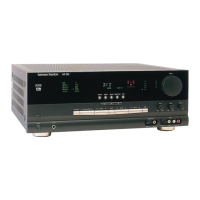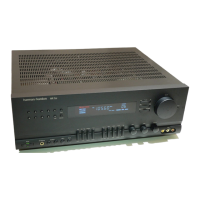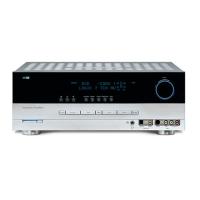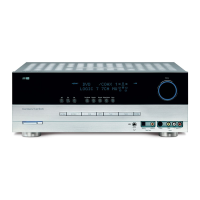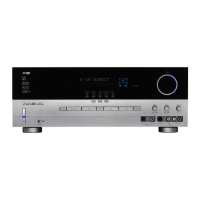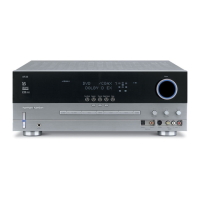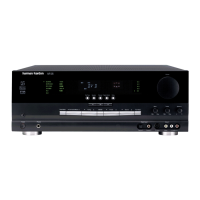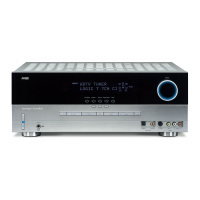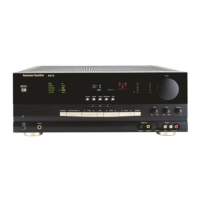30 OPERATION
Operation
RDS Operation
The AVR 2000 is equipped with RDS (Radio Data
System), which brings a wide range of
information to FM radio. Now in use in many
countries, RDS is a system for transmitting
station call signs or network information, a
description of station program type, text
messages about the station or specifics of a
musical selection, and the correct time.
As more FM stations become equipped with RDS
capabilities, the AVR 2000 will serve as an easy-
to-use center for both information and
entertainment. This section will help you take
maximum advantage of the RDS system.
RDS Tuning
When an FM station is tuned in and it contains
RDS data, the RDS Indicator
AE
will illumi-
nate and the AVR 2000 will automatically dis-
play the station’s call sign or other program serv-
ice in the Main Information Display
X
.
RDS Display Options
The RDS system is capable of transmitting a
wide variety of information in addition to the
initial station call sign that appears when a sta-
tion is first tuned. In normal RDS operation the
display will indicate the station name, broadcast
network or call letters. Pressing the RDS button
@
N
enables you to cycle through the various
data types in the following sequence:
• The station’s call letters (with some private
stations other information too).
• The station’s frequency.
• The Program Type (PTY) as shown in the list
below. The PTY Indicator
AD
will illuminate
when this data is being received.
• A “text” message (Radiotext, RT) containing
special information from the broadcast station.
Note that this message may scroll across the
display to permit messages longer than the eight
positions in the display. Depending on signal
quality, it may take up to 30 seconds for the text
message to appear; in that time, the word
TEXTwill flash in the Information Display
when RT is selected. The RT Indicator
AB
will
illuminate when text data is being received and
ready to be displayed.
• The current time of day (CT). Note that it may
take up to two minutes for the time to appear,
in that time the word TIME will flash in the
information display when CT is selected. The CT
Indicator
AC
will illuminate when time data is
being received. Please note that the accuracy of
the time data is dependent on the radio station,
not the AVR 2000.
Some RDS stations may not include some of
these additional features. If the data required
for the selected mode is not being transmitted,
the Main Information Display
X
will show
a NO TYPE, NO TEXT or NO TIME
message after the individual time out.
In any FM mode the RDS function requires a
strong enough signal for proper operation. If
you receive a partial message, or any of the
RDS, PTY, CT or RT Indicators
AEADAC
AB
going on and off, try slowly adjusting the
antenna or tune to another stronger RDS
station.
Program Search (PTY)
An important feature of RDS is its capability of
encoding broadcasts with Program Type (PTY)
codes that indicate the type of material being
broadcast. The following list shows the
abbreviations used to indicate each PTY, along
with an explanation of the PTY:
• (RDS ONLY)
• (TRAFFIC)
• NEWS: News
• AFFAIRS: Current Affairs
• INFO: Infomation
• SPORT: Sports
• EDUCATE: Educational
• DRAMA: Drama
• CULTURE: Culture
• SCIENCE: Science
• VARIED: Varied Speech Programs
• POPM: Popular Music
• ROCKM: Rock Music
• M.O.R.M.: Middle-of-the-Road Music
• LIGHTM: Classical Music
• CLASSICS: Serious Classical Music
• OTHERM: Other Music
• WEATHER: Weather Information
• FINANCE: Financial Programs
• CHILDREN: Children’s Programs
• SOCIAL A: Social Affairs Programs
• RELIGION: Religious Broadcasts
• PHONE IN: Phone-In Programs
• TRAVEL: Travel and Touring
• LEISURE: Leisure and Hobby
